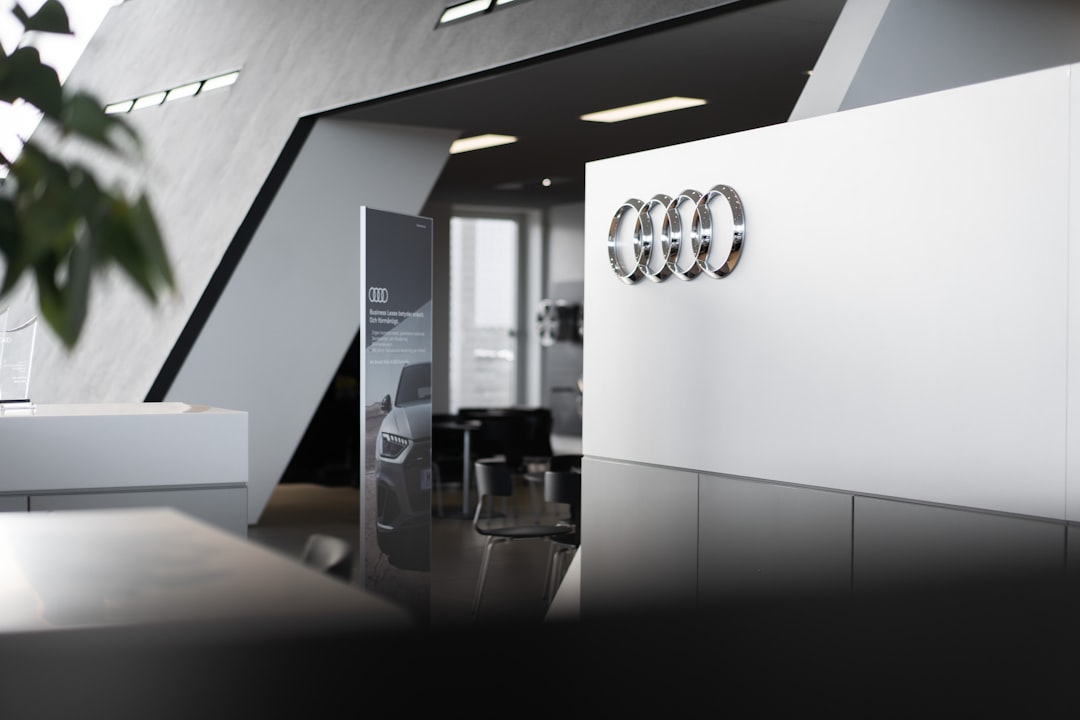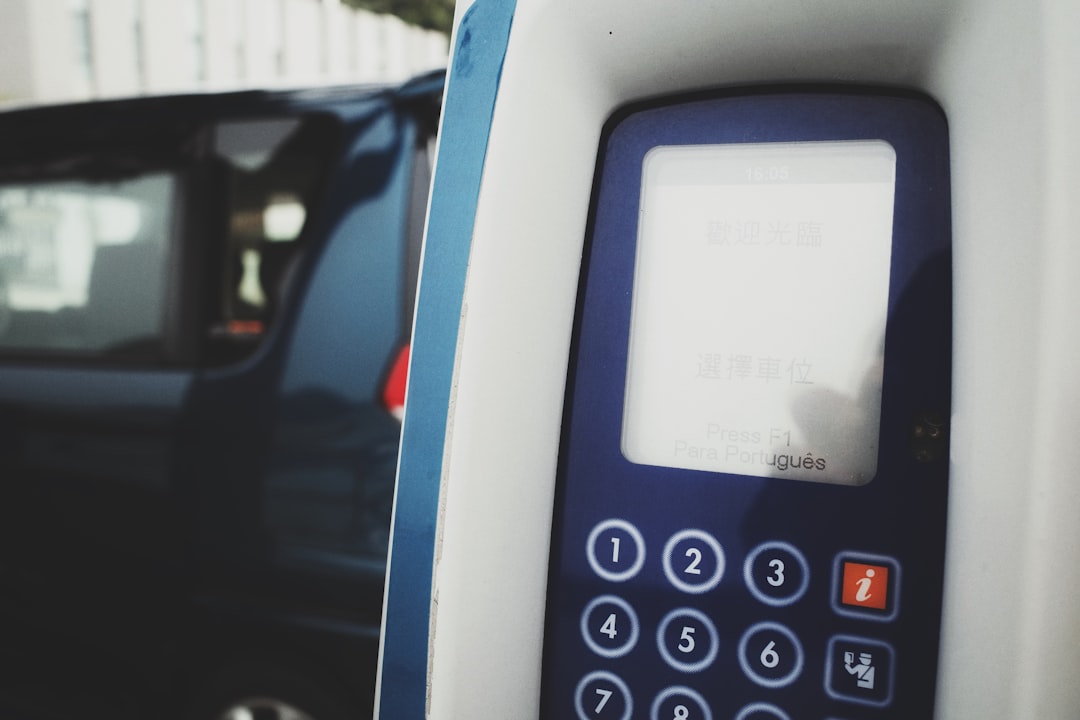

Engage prospects with a scan and streamline customer engagement with FREE QR code marketing tools by Sona – no strings attached!
Create a Free QR CodeFree consultation

No commitment

Engage prospects with a scan and streamline customer engagement with FREE QR code marketing tools by Sona – no strings attached!
Create a Free QR CodeFree consultation

No commitment
The auto financing companies sector is at a crossroads: consumers increasingly want streamlined, digital-first experiences, yet many organizations still rely on outdated analog tactics like brochures or in-branch flyers, or manual sign-up forms. This disconnect leads to missed high-value prospects who interact with physical assets but never enter the CRM, resulting in lost opportunities that are hard to trace and recover. The lack of real-time visibility into these interactions creates challenges for offering the best auto loan rates, competitive financing options, and personalized terms.
QR codes have become a practical bridge for marketing teams, enabling them to transform momentary attention into meaningful engagement. A quick scan brings potential buyers to calculators, pre-approval forms, offers, or a finance advisor, while providing first-party insights directly into the marketing stack. This closes the data gap between offline and online, allowing organizations to better attribute actions and optimize their resources.
This article outlines tactical strategies auto financing companies use to leverage QR codes for capturing high-fit leads, monitoring the full customer journey from engagement to funded loans, and automating retargeting. Along the way, we address challenges like untracked prospects, anonymous traffic, and late-stage lead engagement, presenting actionable ways to drive measurable ROI and deliver tailored financing terms to every buyer segment.

Many auto financing companies still miss promising leads because potential buyers often interact with physical touchpoints such as loan posters or direct mailers without taking the next step. Traditional sign-up sheets or brochure pick-ups rarely capture useful contact data, leaving marketing teams blind to high-intent visitors and perpetuating the disconnect between offline interest and digital action. When rate shoppers walk past a dealership window or glance at a flyer, their intent fades unless a simple action is available in the moment.
Modern QR code strategies allow companies to transform every physical asset into a lead-generating mechanism. Instead of hoping prospects fill out a form or call a hotline, marketers can guide them to tailored calculators, approval forms, or advisor chats through a single scan. By removing small points of friction, such as typing a long URL or finding the right phone number, teams capture more qualified inquiries and accelerate the path to decision. With dynamic QR codes supported by platforms like Sona QR, marketers can track every scan, personalize the next step, and adjust the destination as offers evolve.
Advanced tools give marketing teams the ability to monitor which campaigns and assets move buyers through the funnel. With QR-enabled workflows, every interaction is recorded, enabling faster follow-ups and more precise nurture sequences. Over time, patterns in scan behavior inform creative decisions and investment priorities, turning historically opaque offline interactions into measurable digital signals.

Many automotive financing providers face a common challenge: a significant percentage of potential leads engage with offline materials but never surface as known prospects in digital systems, a trend echoed across the finance industry. Relying solely on form submissions or inbound calls often means organizations lack crucial visibility into buyer intent until it is too late, sometimes only learning about a potential deal after a competitor has already made contact. The result is a marketing and sales engine that reacts rather than anticipates, limiting the ability to present optimal rates and terms when interest is highest.
QR codes address this by removing friction from the prospect journey and revealing engaged traffic that otherwise remains anonymous. Instead of asking buyers to type long URLs or remember phone numbers, QR-driven pathways allow a one-scan action that matches the buyer’s context. Whether the code launches a pre-approval flow, a payment calculator, or an advisor’s scheduling link, it turns attention into a traceable step toward conversion. As scans accumulate, marketers gain the visibility needed to optimize offers, channels, and timing and to build reliable attribution, as discussed in Sona’s blog post titled The Importance of Accurate Revenue Attribution.
Deploying QR codes on high-visibility assets lets marketers attribute offline touchpoints and understand buyer behavior earlier in the decision cycle. The outcome is a pipeline fed by measurable, high-intent engagements rather than anonymous foot traffic.

A persistent headache for many lenders is the difficulty of connecting varied offline interactions to specific digital journeys and outcomes. Standardized QR codes solve this by acting as unique entry points, allowing teams to route scanners to the most relevant action and to test destination efficacy over time. When each code corresponds to a distinct journey or outcome, analysis becomes granular and actionable.
Several QR formats are particularly useful in auto finance. While static codes are suitable for fixed materials, dynamic QR codes unlock editing, tracking, and personalization without reprinting. Teams can rapidly change destinations as rate campaigns shift, new calculators launch, or appointment availability changes.
With dynamic QR functionality, marketers can continually optimize destinations to match current goals, from promoting seasonal incentives to driving refinancing during rate-friendly periods. A code printed today can support multiple campaigns over time, maximizing the life and ROI of every physical asset.

Auto financing organizations often face uncertainty around which physical touchpoints yield the best lead quality or contribute to measurable deals. This gap leads to wasted spend on underperforming brochures or signage while high-impact placements go underutilized. QR codes, when strategically deployed, convert offline foot traffic into identifiable, attributable engagement that reveals where the most promising opportunities lie.
Start by mapping your typical buyer journey across physical environments. Identify the moments when curiosity peaks, such as when a shopper compares vehicles on the lot or examines rate posters in a branch. Insert QR codes that make the next step obvious and effortless. Then, use scan analytics to see which placements, messages, and offers convert most consistently.
Data-driven deployment enables marketing teams to prioritize locations and print assets by actual engagement, not assumptions. Over time, these insights guide resource allocation across territories and campaigns, improving both lead volume and quality.

Auto lenders commonly lose potential deals when prospects disengage due to friction such as complex forms, unclear next steps, or slow response times. QR codes streamline these moments and convert curiosity into action. They also give lenders a way to tailor the journey by segment, so first-time buyers, subprime applicants, and refinance candidates each see a path that reflects their objectives.
Start with a small set of high-impact use cases that map to your revenue goals. Test messaging variants that emphasize speed, savings, or personalized advice. Measure scan-to-application conversion and refine the journey based on results. When the destination is highly relevant and the follow-up is timely, scan rates rise and churn falls.
These use cases accelerate pipeline velocity, increase qualified applications, and limit the loss of prospects who previously remained untracked. They also build a foundation for retargeting, since each scan creates a measurable signal tied to a specific intent.
In auto financing, marketing teams often struggle to retarget genuinely interested buyers because anonymous physical interactions leave no digital trace. This lack of actionable data leads to generic campaigns and missed high-intent follow-ups. QR codes change this dynamic by turning each scan into a granular signal that includes timing, location, and the type of content that attracted attention.
Every QR scan reveals context: which dealership or branch, which vehicle or offer, and which stage of the buyer journey. By placing unique codes at awareness, consideration, and conversion touchpoints, marketers can automatically segment audiences based on behavior and deploy tailored follow-up. With Sona QR, scan events can be synced to CRMs and ad platforms to trigger remarketing, nurture emails, or personal outreach within minutes. Sona is an AI-powered marketing platform for identity resolution and attribution that complements QR capture. See Sona’s Playbook titled Amplifying Cold Outreach With Website Visitor Intelligence for tactics that turn signals into sales conversations.
With platforms enabling identity resolution and account-level views, marketers can move beyond guesswork. They can orchestrate follow-up based on real behavior, ensuring the right customers receive relevant offers at the right time.
A significant pain for auto lenders is fragmentation. Leads may begin their journey on physical assets but never connect to digital nurture streams, creating blind spots and inconsistent performance. QR codes serve as universal connectors, integrating touchpoints and simplifying attribution across channels. When scan data flows into your core systems, you can orchestrate journeys that move buyers from awareness to funded loan with fewer drop-offs.
Treat QR codes as the offline onramp to your digital engine. Whether your team leans on print, events, or out-of-home media, you can route scanners to consistent experiences and capture data that fuels remarketing. With a centralized platform like Sona QR, you can manage codes, monitor performance, and sync insights with your CRM and ad platforms.
When each code is linked to a specific channel and intent, you can measure how audiences move through your funnel and pinpoint where improvements will yield the greatest return.
Even strong QR concepts can underperform without a structured plan. A repeatable checklist ensures that every campaign aligns to business goals, reaches buyers in the right context, and produces reliable data for optimization. Begin by identifying a single, high-impact outcome such as boosting pre-approvals at a dealership launch or increasing refinance applications during a targeted mailer. Then design your destination experience around speed, clarity, and mobile usability.
Before launch, confirm that every scan triggers a measurable event and a timely response. Whether you use Sona QR or another platform, connect scan data to your CRM and automation tools so you can follow up within minutes. Post-launch, analyze performance by asset, channel, and segment, then iterate with A/B tests on CTA copy, creative, and destination flows. For creative setup best practices, see how to integrate QR codes into your advertising.
Set a precise objective such as Increase pre-approval submissions by 20 percent at our new dealership in Q3 or Generate 500 refinance checks from customers with loans older than 24 months. Tie the goal to a downstream metric like funded loans or appointment show rate. Clear goals help you choose the right destination and creative, while creating alignment across marketing, sales, and branch staff.
Clarify the target audience and their context. For example, first-time buyers at a university event may respond to education-focused content, while lease-end customers need a fast path to compare loyalty offers. The more specific the goal and audience, the more relevant your QR experience will be.
Dynamic QR codes are preferred for most campaigns because they support tracking, A/B tests, and destination changes without reprinting. They also allow you to add UTM parameters and pass context to your analytics stack. For fixed materials like vehicle manuals, a static code can be acceptable if updates are unlikely.
Match the format to the action. Use web links for calculators and forms, vCards for advisor introductions, and SMS triggers for quick questions. If you offer a mobile app for applications or account management, device-aware app download links will reduce friction and increase adoption.
Design the physical asset for clarity. Place the code at eye level, ensure strong contrast and adequate quiet zones, and include a succinct, benefit-led CTA such as Scan to check your rate in 60 seconds. Add your logo or a branded frame to build trust, and test scannability across common devices and lighting conditions before releasing materials at scale.
Optimize the destination experience for mobile. Use short forms, progressive profiling, and wallet-friendly verification methods. Ensure your calculator loads quickly and shows clear next steps, such as Save this quote or Book a consultation, so momentum continues.
Prioritize placements where intent spikes. In-branch counters, vehicle window stickers, and service waiting areas capture high-intent visitors who are already considering financing. Direct mail and localized billboards can spark action among refinance candidates or new movers in your territory.
Coordinate with partner dealerships and community events to broaden reach. Provide simple instructions to on-site staff so they can promote scanning naturally and answer questions. Consistency across environments helps buyers feel confident engaging via QR.
Instrument every code with UTM parameters and campaign tags. Monitor scans by channel, time of day, and location, and correlate with downstream outcomes like application completion, credit pull, and funded loan. Identify high-performing assets and replicate their attributes, while diagnosing low performers for redesign or relocation.
Establish a weekly optimization rhythm. Review conversion rates, drop-off points, and appointment show rates. Test different CTAs, creative styles, or destination flows to raise performance. Share learnings across teams so wins can be scaled efficiently.
This process shortens feedback loops, reduces churn risk, and improves campaign ROI. By operationalizing QR deployment as a repeatable practice, lenders can make incremental gains that compound over time. Start creating QR codes for free.
A major challenge for auto financing leaders is proving which campaigns truly impact revenue. With leads moving between print, digital, and in-person touchpoints, tying specific actions to closed-won deals has often been elusive. QR code platforms make real-time attribution and journey mapping standard, transforming scans into a reliable source of first-party data that supports budget decisions and sales alignment.
To produce trustworthy insights, track from the first scan through to outcomes such as completed applications, approvals, and funded loans. Enrich scan events with UTM parameters, campaign names, and placement tags, then sync to your CRM or customer data platform. Sona QR and Sona.com help unify these signals with web visits, email engagement, and ad interactions, creating a full-funnel view of marketing impact. See Sona’s blog post titled Single vs Multi-Touch Attribution Models.
With closed-loop measurement, teams can reinvest in what works, accelerate underutilized opportunities, and make a clear case for marketing spend tied to incremental revenue.
Expanding QR programs beyond a pilot phase requires systems and habits that make every engagement measurable and actionable. When each print asset has a unique, dynamic code and a clear CTA, teams can compare performance and scale the patterns that work. Strong internal communication ensures branch staff, dealership partners, and contact center agents all reinforce the value of scanning and know how to guide customers to the next step.
Consider the automation layer as essential infrastructure. The goal is not only to engage but to trigger the right workflow every time: a personalized email after a rate check, an SMS to confirm an appointment, or a retargeting audience for people who started but did not finish an application. The better your orchestration, the more predictable your pipeline.
Modern attribution and reporting tools make it simple to track, iterate, and improve at scale. Start with a few high-leverage experiments, then expand placements and use cases as your playbook solidifies.
Auto financing companies are finding new ways to use QR codes to address persistent industry pain points. The most successful campaigns pair clear CTAs with highly relevant destinations, then close the attribution loop by syncing scan data with CRM and marketing systems. These efforts reveal demand, reduce manual work, and accelerate fundable opportunities.
Consider how these strategies could translate into your market. When you identify moments of attention and provide instant next steps, your offline presence becomes a measurable acquisition channel rather than a cost center.
These examples show how advanced tracking and analytics can convert offline moments into measurable growth. Use them as templates for your own experiments, then localize CTAs, offers, and placements to fit your market.
Industry experts stress that every QR deployment must align to a meaningful buyer outcome. Sending customers to a generic homepage or an unrelated offer is a fast way to lose trust. The most effective campaigns define the desired next step, design for mobile users, and ensure post-scan automation is in place to capture momentum. Stakeholder alignment across marketing, sales, and operations ensures that scanning leads to action rather than a dead end.
Avoiding common mistakes can significantly improve results. Many underperforming campaigns suffer from poor visibility, confusing CTAs, or destinations that load slowly on mobile. Simple fixes such as better placement, clearer copy, and shorter forms can produce outsized gains at low cost.
QR codes are more than a technical novelty; they are a pragmatic solution to longstanding challenges in auto financing lead generation and attribution. By connecting every physical engagement to digital intelligence, companies can finally track, nurture, and convert high-quality prospects who once slipped under the radar. Modern QR platforms provide the analytics and integration needed for marketers to attribute revenue, build actionable audiences, and continually improve campaigns.
For leaders ready to get started, begin with one or two high-impact placements such as vehicle stickers and branch counters. Use dynamic QR codes from a platform like Sona QR to track scans, manage destinations, and sync data to your CRM. As results come in, expand to direct mail, events, and digital signage, and apply your learning to optimize CTAs, creative, and destinations. The payoff is a data-driven marketing system that delivers more pre-approved applications, higher conversion rates, and tailored financing opportunities that benefit both buyers and the organizations ready to serve them. For a finance-specific primer on execution, review this guide for insurance and finance companies.
QR codes have revolutionized the auto financing industry by transforming lead capture from a passive process into a dynamic, measurable growth engine. Whether it’s acquiring new customers, streamlining loan applications, or enhancing the overall client experience, QR codes replace traditional paperwork and phone calls with instant, mobile-friendly interactions that capture valuable data in real time. Imagine instantly knowing which marketing materials generate the most qualified leads and being able to optimize your efforts on the fly.
With Sona QR, auto financing companies can effortlessly create dynamic, trackable QR codes that update instantly without reprinting and directly link every scan to lead conversions and revenue growth. No more missed opportunities or guesswork—just smarter campaigns that deliver measurable results. Start for free with Sona QR today and turn every scan into a new financing opportunity and a loyal customer.
The article does not list specific companies but explains that top auto financing companies focus on digital-first, streamlined experiences that offer personalized loan rates, pre-approval applications, refinancing assessments, and finance advisor consultations.
You can compare auto financing rates and terms by using mobile-friendly calculators accessed via QR codes on rate posters or brochures that allow you to adjust payment options and save or email personalized quotes.
Steps include scanning a QR code to access a pre-approval application or form, completing a mobile-optimized application with progressive profiling, submitting required documents, and following up promptly with financing advisors.
Improve your chances by engaging early through QR code scans that provide instant rate checks, personalized offers, and direct access to finance advisors, and by responding quickly to follow-ups triggered by your application activity.
The article does not specifically mention hidden costs or fees associated with auto financing.
Use Sona QR's trackable codes to improve customer acquisition and engagement today.
Create Your FREE Trackable QR Code in SecondsJoin results-focused teams combining Sona Platform automation with advanced Google Ads strategies to scale lead generation

Connect your existing CRM

Free Account Enrichment

No setup fees
No commitment required

Free consultation

Get a custom Google Ads roadmap for your business






Launch campaigns that generate qualified leads in 30 days or less.
